Visit to the Former Kaichi School
It was early November when I visited the former Kaichi School in Matsumoto City, Nagano Prefecture.
Typhoon No. 19, which passed through Japan on October 12-13, also affected the former Kaichi School, and the plaster on the outer wall of the tower in the photo has fallen off.
It is the part you can see on the left in this photo.
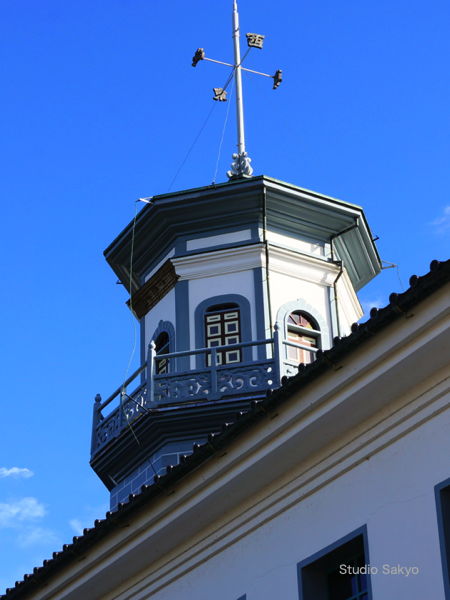
There seemed to be no other damage, and the museum was open to the public as usual.
In May 2019, the former Kaichi School was declared a national treasure by the Agency for Cultural Affairs. It is the first modern school building to be designated as a national treasure.
The building was completed in 1876 and was used for nearly 90 years after that. The building was designed and constructed by a local carpenter, Seiju Tateishi.
View from the front. This school building is not symmetrical, and the number of windows on the left side is one row more.
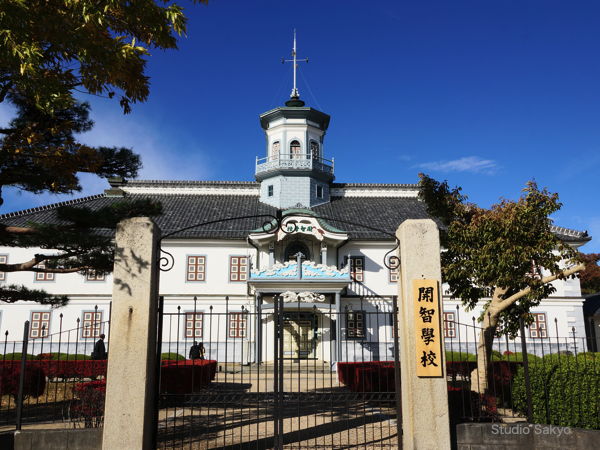
The entrance to the tour is not here, but along the road on the left side of the picture.
The school building was designated as an important cultural property in 1961, and was moved from 1963 to the following year. The school was located a little further south along the Metoba River. It has been open to the public as a museum since 1965.
Entering the site and passing in front of the building. Seeing the main entrance. The exterior walls are plastered, and the “corner stones" are not stones, but simulated representations by gray plaster.
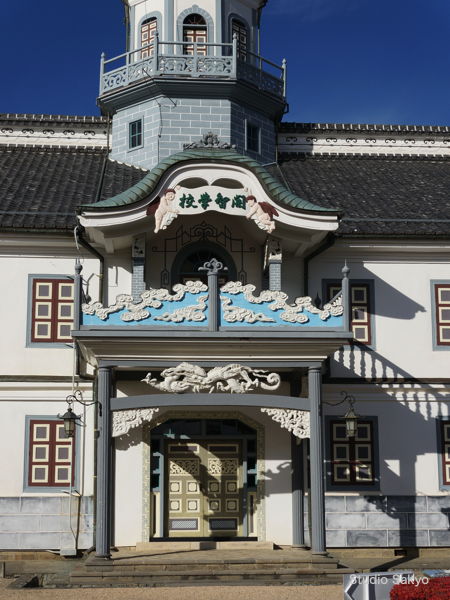
Two angels holds up the plaque with the name of the school on it from both sides.
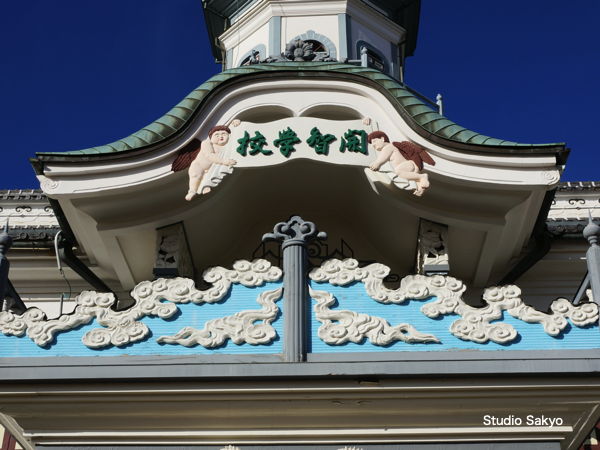
Actually, this angel wasn’t here all the time. The school building has undergone several renovations due to disasters and environmental improvements, and it is said that the angels were removed around 1897.
This photo was displayed inside the school and was taken in 1963. In the same year, the school was moved to a new location, and it was restored to its original state when it was built in 1876.
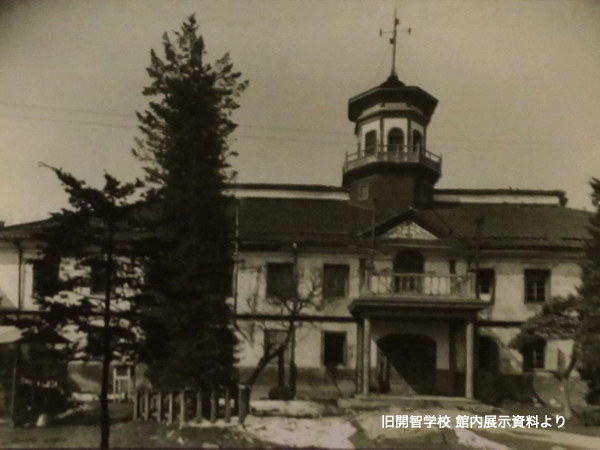
The angels holding up the name of the school was designed based on the title of the “Tokyo Nichinichi Shimbun" newspaper of the time. I found the image in the digital collection of the National Diet Library, so here it is.
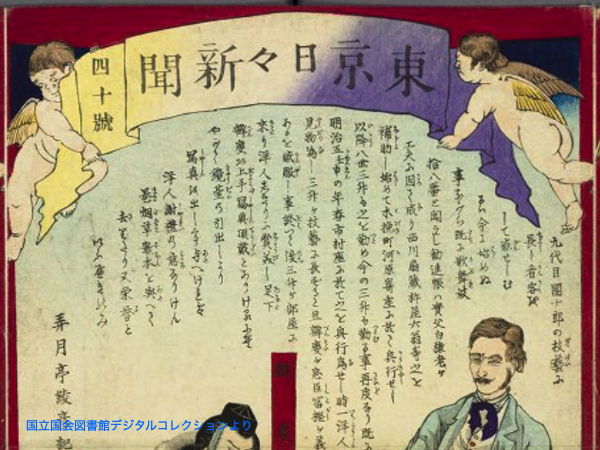
Inside the museum, there were various materials related to the Kaichi School on display.
There was also a model of the school building, which when it was newly built was shaped like the letter “L" of the alphabet reverses. The only part of the L that remains today is the short horizontal bar.
One room is a reproduction of a classroom, with a blackboard, organ, desks and chairs.
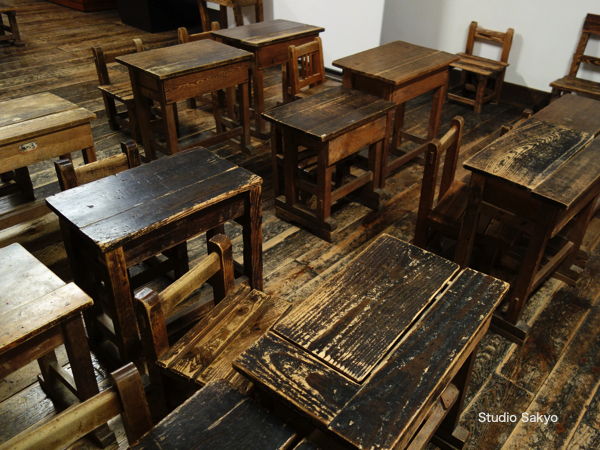
At the end of the first floor, there is a staircase. From here, we can go to the second floor.
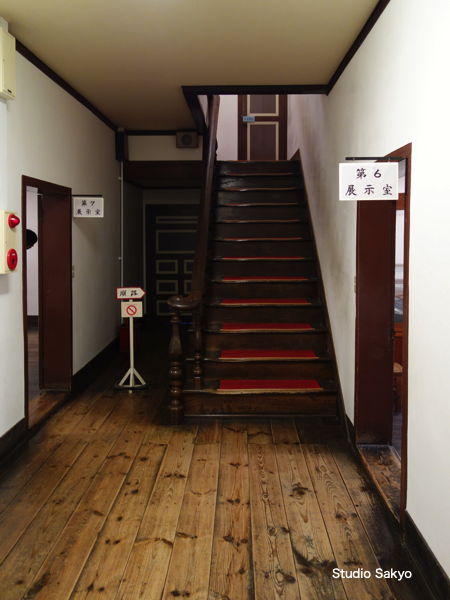
It is said that this is the room where the Meiji Emperor took a rest when he made a visit to Matsumoto in 1881. It is said that the local people submitted a petition to the Grand Council of State to request the Emperor to make a visit in those days.
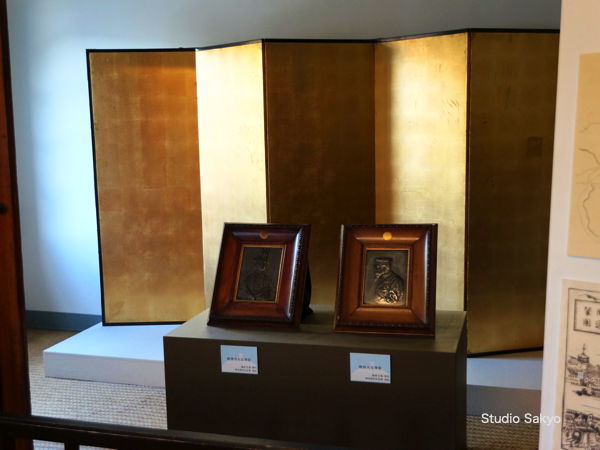
A door in the middle of the second floor.
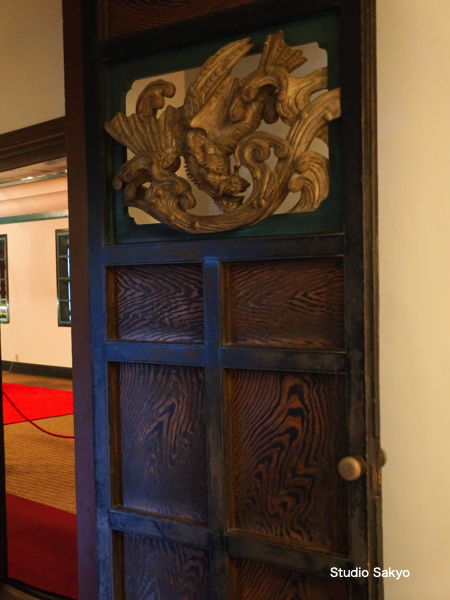
This door was converted from the one of Jorinji Temple, which used to be located nearby. Other materials such as log pillars were also used from nearby temples.
It was written that the grain of the wood was painted on. Is it correct that the wood grain was added with paint to make the door look more attractive since it was converted? (I imagine).
This is the auditorium.
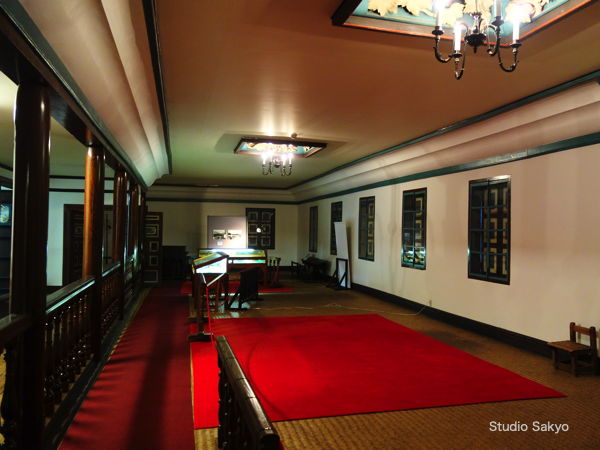
Windows with colored glass inlay.
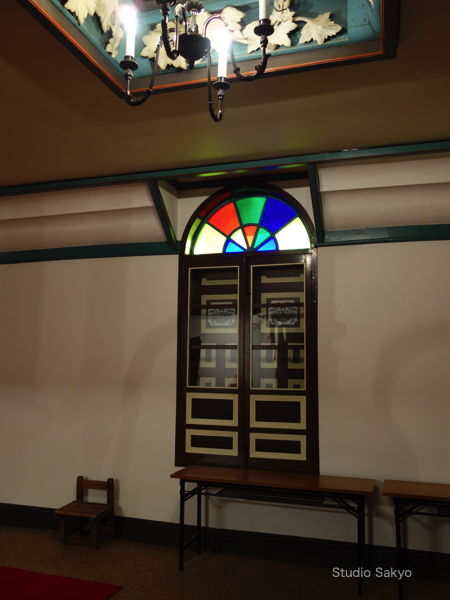
The first glass was imported from France, and now it was displayed in a display case. At the time of the new building, plate glass was not made in Japan, so everything was imported.
The school was built in the Meiji era, but it has been used throughout the Taisho and Showa eras, so the materials on display include items from the Taisho and Showa eras.
There is also a section of materials about Kaichi School during the war.
In 1941, the name of the school was changed to “Kaichi National Elementary School" and the school excursions and school climbing became “training trips" and “training excursions".
As a document of the Showa era, posters drawn by children were displayed, and the contents were “counterintelligence," “work, work, work, work," and “don’t waste money, save money". Children at that time must have had no choice but to draw this kind of content. These pictures are from 1943.
As the Pacific War progressed, classes were no longer held, and work on digging air-raid shelters and other labor services became more frequent, according to the exhibition materials.
After finishing the tour, I went outside.
The last photo shows two stone monuments on the grounds that says “Kaichi School, the place where the Emperor Meiji visited" and “the place where the Emperor Meiji rested".
I didn’t check it properly, but seeing the the photo, it seems to be built in 1935. The monument must have been moved too when the school was rebuilt.
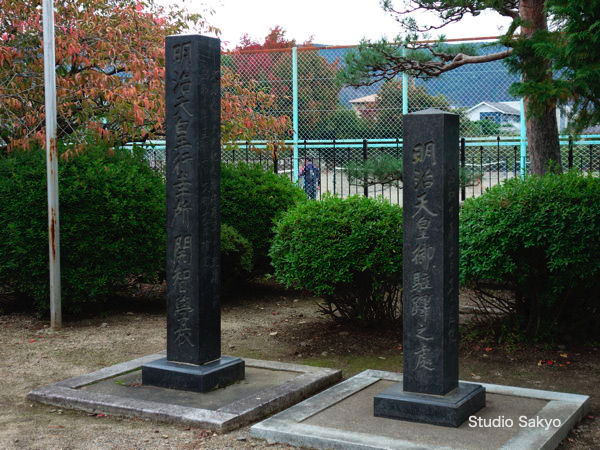
Next to the former Kaichi School is the Matsumoto City Former Catholic Church Priest’s House, so I will go there.
(To be continued)
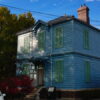
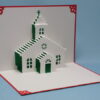
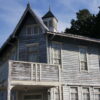
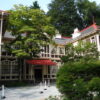
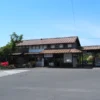
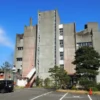
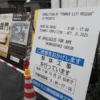
Recent Comments